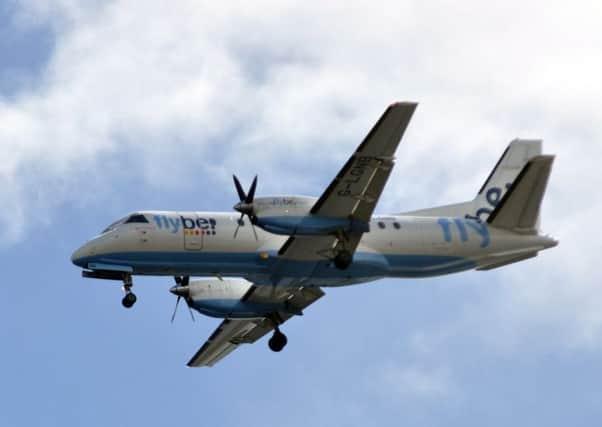Flybe plane plunges 1,000ft after being struck by lightning


The FlyBe plane – with 30 passengers on board – was about to land in Shetland when it went into a dive.
An official report into the incident reveals that the near-disaster was caused by the pilot battling with the autopilot, which he wrongly believed had been switched off.
Advertisement
Hide AdAdvertisement
Hide AdThe Air Accidents Investigation Branch (AAIB) report examined the Aberdeen to Sumburgh flight of a Saab 2000 turboprop on 15 December 2014.
The aircraft was close to landing and at an altitude of 2,000ft when the lightning struck. The pilot wrongly believed the strike had disconnected the autopilot and that he was in control.
The subsequent battle for control between the pilot and the autopilot saw the plane climb to 4,000ft before plunging to 1,000ft, when the pilot finally gained control. The dive reached a maximum rate, said the AAIB, of 9,500ft-per-minute – three to four times the normal rate of descent.
The report states: “The lightning strike caused the commander to utter an expletive and cease transmitting to air traffic control.
“The commander’s actions following the lightning strike were to make manual inputs on the flying controls, which appear to have been instinctive and may have been based on his assumption that the autopilot would disconnect when lightning struck.”
As a result, the aircraft was trying to fly at 2,000ft while the pilot was attempting to pull the nose up and climb.
“The autopilot’s nose-down...authority exceeded the commander’s...nose-up authority and the aircraft pitched nose-down and descended, reaching a peak descent rate of 9,500 ft/min,” stated the report.
The autopilot eventually disengaged owing to a fault allowing the pilot to take over. “The aircraft started to pitch up just before reaching a minimum height of 1,100 ft above sea level,” said the report.
The report states that the pilot may have experienced “cognitive tunnelling”.